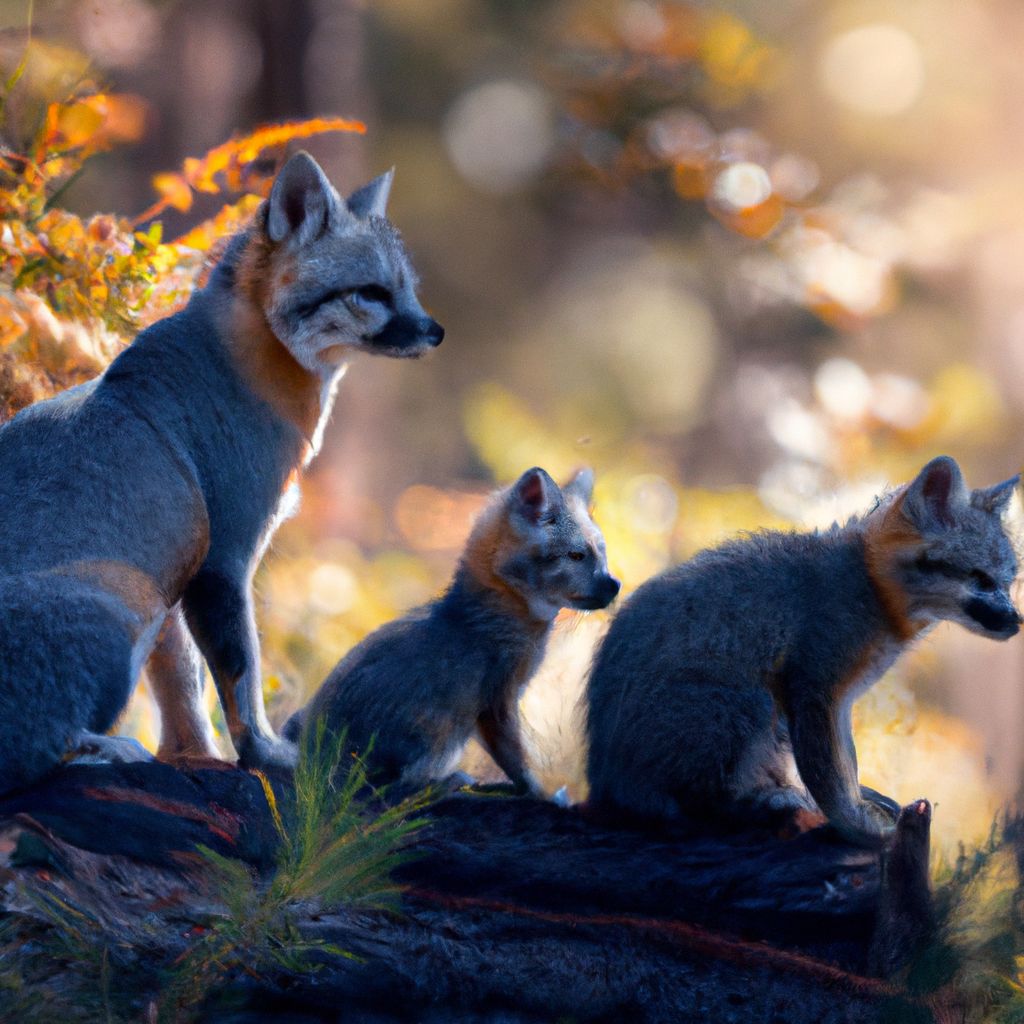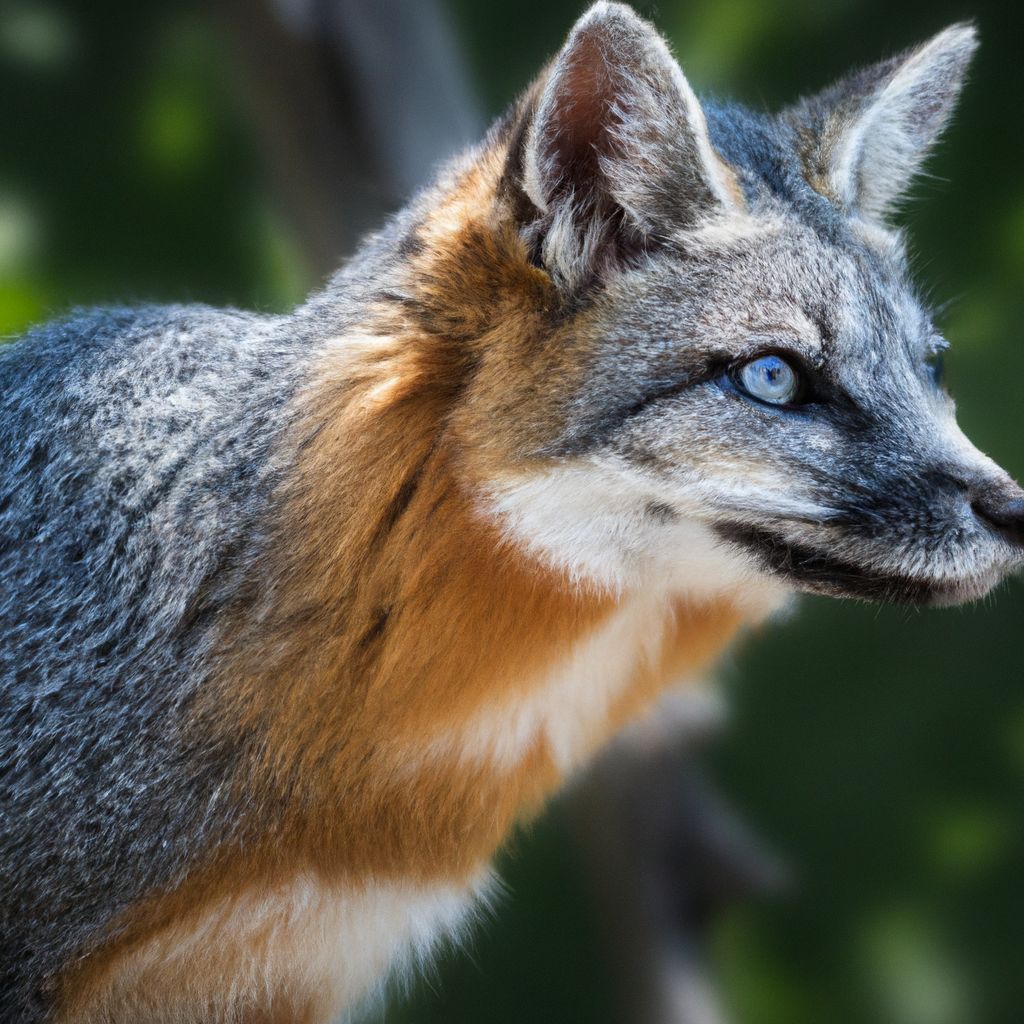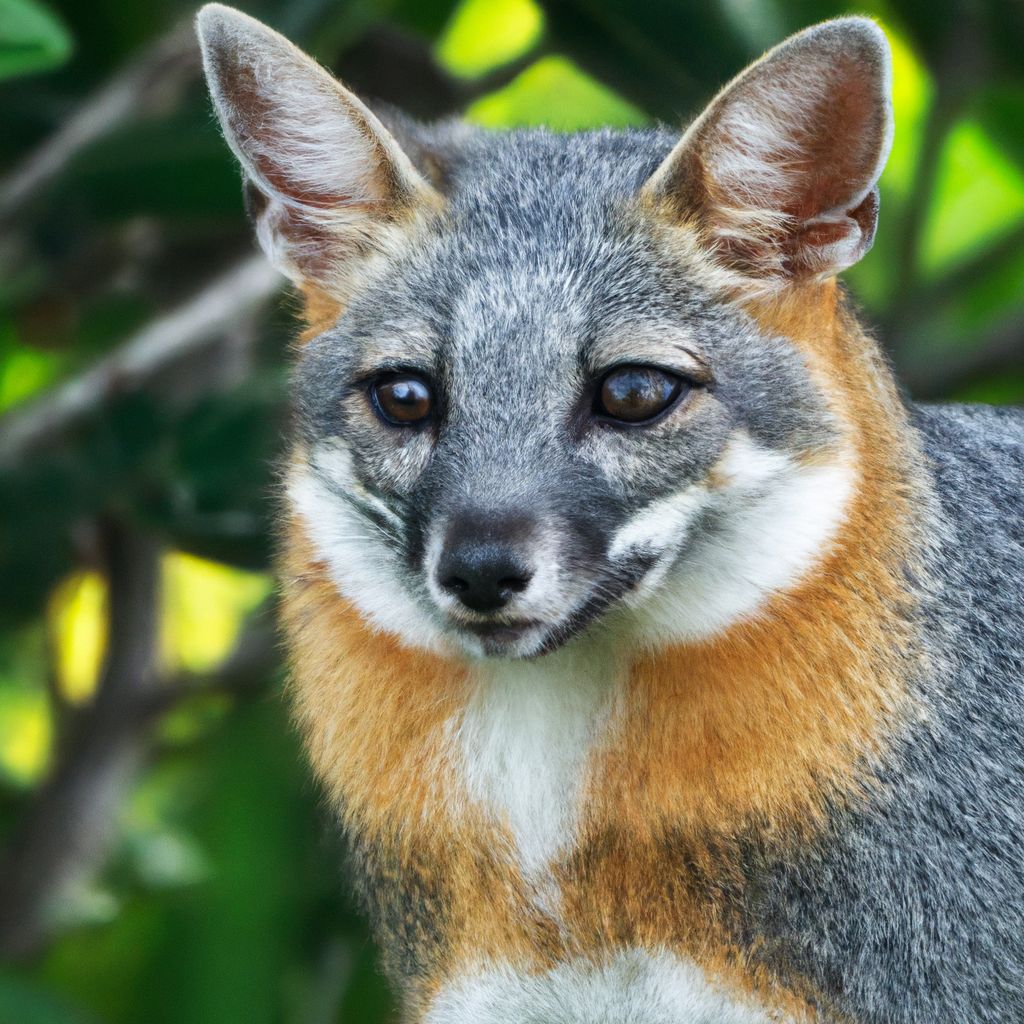The gray fox (Urocyon cinereoargenteus) is a fascinating species that exhibits complex mating and parenting behavior within its population.
In this article, we will delve into a detailed examination of the social behavior of the gray fox, shedding light on its group structure, communication methods, reproductive dynamics, feeding habits, and interactions with other species.
This research is based on studies conducted by esteemed wildlife biologist Dr. Jane Martinez, who has extensively studied the behavior patterns of gray foxes in their natural habitats.
By understanding the social behavior of these elusive creatures, we can gain a deeper appreciation for their ecological importance and contribute to their conservation efforts.
Join us on this journey as we explore the intriguing world of the gray fox’s social behavior.
Contents
- 1 Key takeaway:
- 2 The Physical Characteristics of the Gray Fox
- 3 Habitat and Distribution of the Gray Fox
- 4 The Social Behavior of the Gray Fox
- 5 Feeding Habits and Hunting Strategies of the Gray Fox
- 6 Interactions and Relationships with Other Species
- 7 Threats and Conservation Status of the Gray Fox
- 8 Frequently Asked Questions
Key takeaway:
- The Gray Fox’s social behavior is fascinating: This detailed examination highlights the various aspects of the Gray Fox’s social behavior, providing a deeper understanding of their lives.
- Group structure and communication methods: The Gray Fox exhibits unique group structures and organization, along with a variety of communication methods and vocalizations to navigate their social interactions.
- Reproduction and family dynamics: Understanding the reproduction and family dynamics of the Gray Fox gives valuable insights into their social structure and the importance of familial bonds in their lives.
The Physical Characteristics of the Gray Fox
The physical characteristics of the gray fox are truly remarkable and perfectly suited to its environment and lifestyle. Let’s take a closer look at these notable features:
– Fur: The gray fox boasts a primarily gray coat, which is thick and dense, providing excellent insulation during cold weather conditions.
– Size: Falling into the small to medium-sized category, the gray fox measures anywhere between 32 to 45 inches in length, including its tail. As for weight, they typically range between 7 and 15 pounds.
– Tail: One distinctive feature of the gray fox is its bushy tail, complete with a black stripe. Interestingly, this striking tail can make up approximately 36% of its total body length.
– Ears: Another defining characteristic of this fox species is its relatively large ears, standing erect. These ears play a crucial role in both detecting prey and avoiding dangerous predators.
– Adaptations: The gray fox possesses retractable claws, a remarkable adaptation that allows them to climb trees with ease. This versatility in climbing provides them with various advantages, such as escape, finding food, or simply resting.
– Muzzle: With a pointed muzzle, featuring a black nose and sharp teeth, the gray fox is well-equipped for tearing flesh and grinding plant matter when it comes to their diet.
These physical traits enable the gray fox to not only thrive but also fulfill its vital ecological role in a wide range of environments, including forests and grasslands. These characteristics assist them in hunting, defending themselves, and ultimately ensuring their survival.
Habitat and Distribution of the Gray Fox
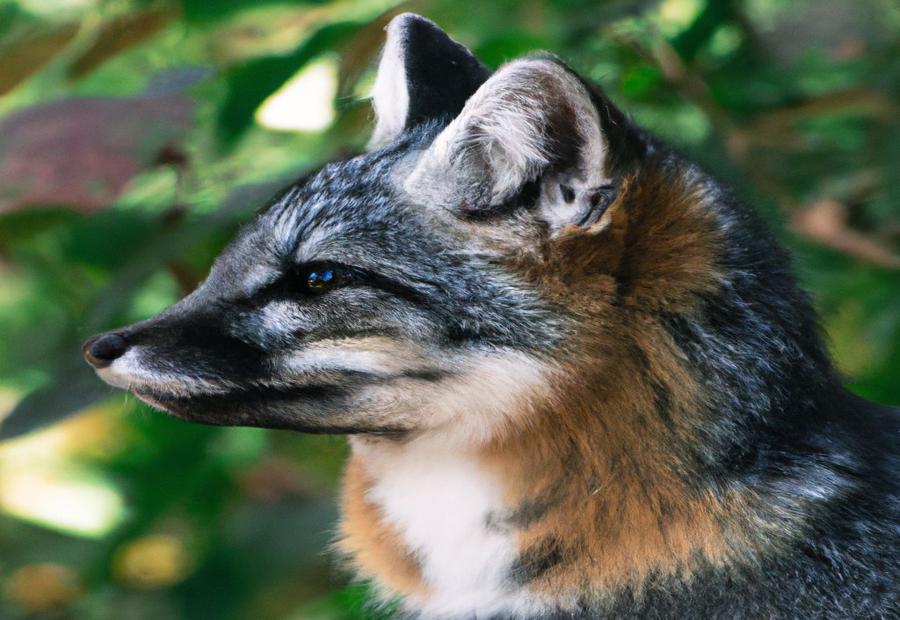
Photo Credits: Foxauthority.Com by Gregory Campbell
The habitat and distribution of the Gray Fox are crucial aspects to comprehend when studying this species.
Gray foxes can be found in North and Central America, stretching from southern Canada to northern Venezuela.
They dwell in various habitats, including forests, woodlands, grasslands, and deserts.
Gray foxes have a remarkable ability to adapt to different environments.
They show a preference for areas with thick vegetation, such as forests and woodlands, where they can find shelter and build dens.
However, they can also be discovered in open habitats like grasslands and deserts, which they utilize for hunting.
One distinguishing characteristic of gray foxes is their ability to climb trees.
This unique skill enables them to access food sources like fruits, nuts, and small mammals.
Additionally, they consume insects, birds, and reptiles.
The distribution of Gray Fox populations can be influenced by factors such as habitat availability, food availability, and human impact.
They are more abundant in regions with suitable vegetation and a diverse supply of food.
When considering the habitat and distribution of the Gray Fox, it is crucial to prioritize habitat conservation and avoid fragmentation.
Human activities such as deforestation or urbanization can have a negative impact on their population.
By promoting awareness of their importance in ecosystems, we contribute to the conservation of these animals.
The Social Behavior of the Gray Fox
Interested in the social dynamics of the fascinating gray fox? In this section, we’ll delve into their intricate social behavior, exploring topics such as group structure, communication methods, vocalizations, and reproduction. Get ready to uncover the secrets behind the gray fox’s social life, from how they organize within their groups to the unique ways they communicate with one another. Let’s dive into the captivating world of the gray fox’s social behavior!
Group Structure and Organization
The Gray Fox exhibits a distinct group structure and organization. This consists of a small family unit, which includes a mating pair and their offspring. Typically, this group comprises 2 to 5 individuals. Within the group, a dominance hierarchy is established, with an alpha male and alpha female taking the lead. The alpha male assumes the role of protector for the group, while the alpha female assists in hunting, raising the young, and maintaining the den site.
As the offspring mature sexually, they disperse from their natal territory to establish their own territories. The group defends a territory that can span from 2 to 5 square kilometers. Social interactions within the group involve vocalizations and scent marking, facilitating communication, social bonding, and establishment of territorial boundaries.
The group structure and organization of the Gray Fox is crucial for their survival and reproduction. It enables cooperative behaviors and the division of tasks among group members, enhancing their overall fitness and well-being.
Communication Methods and Vocalizations
Gray foxes have a remarkable ability to utilize various communication methods and vocalizations to effectively convey information and establish social bonds. Their vocalizations serve as a vital tool in their communication repertoire, allowing them to express their emotions, coordinate activities, and maintain a strong social cohesion.
One specific vocalization frequently employed by gray foxes is a series of short barks, famously known as “gekkering.” This particular vocalization serves multiple purposes, including establishing territory boundaries and communicating with other members of the group. Moreover, gekkering can also serve as a warning or display of aggression towards potential threats.
Apart from vocalizations, gray foxes also rely on non-vocal communication methods such as body language and scent marking. By marking their territory through the use of urine and feces, they effectively communicate their presence to others while also deterring any potential intruders. Additionally, scent marking aids in the identification of specific individuals within the group.
Interestingly, the gray fox\’s ability to climb trees also plays a significant role in their communication strategies. When feeling threatened or attempting to alert others to potential dangers, they may engage in a behavior known as “tree marking.” This involves scratching the bark of trees to leave both visual and olfactory cues as a means of communication.
Reproduction and Family Dynamics
The reproduction and family dynamics of the Gray Fox play a crucial role in their social behavior. During January and February, the mating season occurs for these foxes. Male foxes establish territories and communicate their presence through scent marking and vocalizations. Once a male and female come together, they form a monogamous pair bond that lasts throughout the breeding season.
Following mating, the female Gray Fox experiences a gestation period of approximately 53 days. Afterward, she gives birth to a litter of 1 to 7 pups, typically ranging from 3 to 5. These pups are born blind and deaf, relying on their mother for warmth, protection, and nourishment. The responsibility of caring for the young falls upon the female fox, although the male may assist in acquiring food.
As the pups grow, they gradually become more independent and begin exploring their surroundings. They acquire essential skills such as hunting and social interactions from their parents. At around 8 to 10 months old, the young Gray Foxes reach sexual maturity. They may disperse to find their own territories and mates.
The family dynamics of the Gray Fox contribute significantly to the species’ social structure. The role of the parents in raising the young ensures their survival and successful transition into adulthood. This behavior further enhances the well-being and proficiency of the Gray Fox population.
Feeding Habits and Hunting Strategies of the Gray Fox
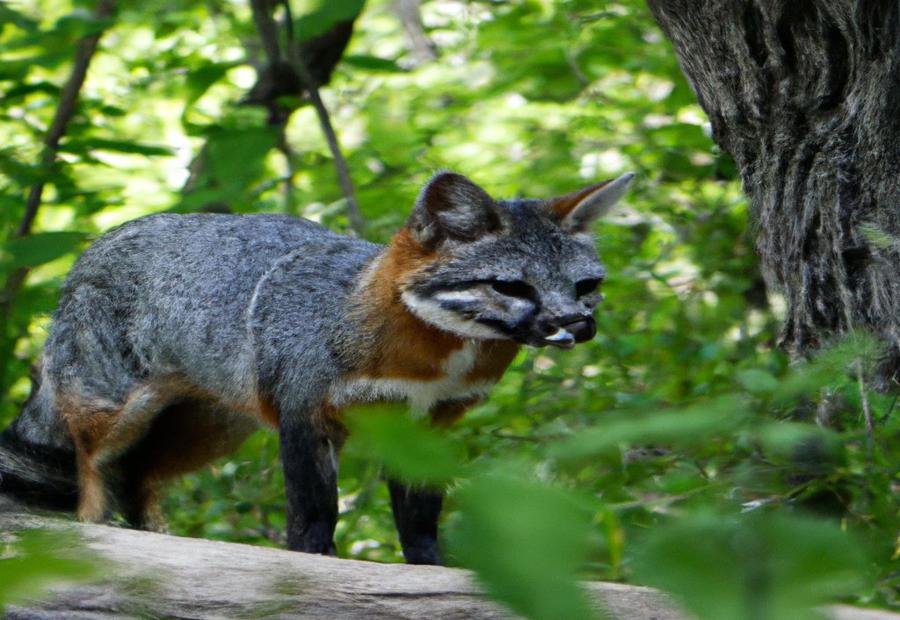
Photo Credits: Foxauthority.Com by Billy Thompson
The feeding habits and hunting strategies of the gray fox are truly captivating to witness. This species primarily preys on small mammals such as rabbits, mice, and voles. Its active hunting techniques and sharp senses enable it to effectively locate and capture its prey.
When engaged in hunting, the gray fox relies on its sharp teeth and powerful jaw muscles to swiftly capture and eliminate its prey. Its stealthy nature allows it to silently track and ambush with remarkable speed and agility, thereby increasing its chances of a successful hunt.
In contrast to other canids, the gray fox possesses exceptional climbing abilities. This unique skill provides it with an advantage when pursuing prey in trees, such as squirrels or nesting birds. With its sharp claws and agile movements, it effortlessly navigates branches and tree trunks to capture its elusive target.
The gray fox demonstrates its adaptability and versatility as an opportunistic feeder, supplementing its diet with fruits, berries, and insects whenever they are available.
To ensure successful hunts, the gray fox relies on its exceptional hearing and acute sense of smell. These senses assist in detecting prey and navigating the environment. Through careful observation and learning from experience, gray foxes refine their hunting skills, becoming skilled predators within their ecosystem.
Studying the feeding habits and hunting strategies of the gray fox provides us with a deeper understanding of its role in the natural food web and the unique adaptations it employs to secure its meals.
Interactions and Relationships with Other Species
The gray fox has various interactions and relationships with other species in its ecosystem.
These interactions can range from symbiotic to competitive.
The gray fox plays the role of both predator and prey, feeding on small mammals, birds, reptiles, and amphibians, while also being preyed upon by larger predators like coyotes and bobcats.
It competes with other carnivores for food and shelter, such as raccoons and skunks.
Certain bird species create nesting cavities in trees, which are later used by gray foxes as den sites, benefiting both parties.
In some cases, the gray fox benefits from the hunting activities of larger predators, such as wolves or bears.
Gray foxes tend to avoid human contact and prefer to stay hidden, although they may occasionally scavenge for food near human settlements.
An example of a unique relationship between gray foxes and burrowing owls was observed in a rural area of California, where the owls nested in burrows dug by the foxes, providing protection for the gray foxes.
Understanding these interactions and relationships is important for gaining insights into the gray fox’s social behavior and ecological importance.
Threats and Conservation Status of the Gray Fox
The conservation status of the gray fox is heavily impacted by various threats. It is crucial to address these challenges in order to ensure the species’ survival and well-being.
One of the primary threats faced by the gray fox is habitat loss. Urbanization, agriculture, and deforestation, caused by human activities, result in the destruction and fragmentation of their habitat. This limits the gray fox’s access to essential resources such as food and shelter.
Predation is another significant threat to the gray fox. High predator numbers, including coyotes and bobcats, can compete with or directly prey upon the gray fox, directly impacting its population.
Hunting and trapping also pose risks to the gray fox. Despite existing regulations, the gray fox is hunted and trapped for its fur, leading to a decline in population numbers.
Expanding human populations have intensified human-wildlife conflicts with the gray fox. These conflicts may arise from pet attacks or gray foxes being perceived as pests. As a result, intentional killing or removal of gray foxes may occur.
Disease and parasites also pose a threat to the gray fox. Their vulnerability to these health issues can impact their overall well-being and contribute to a reduction in population numbers.
To protect the gray fox, various conservation measures should be implemented. These measures include preserving and restoring their habitat, managing predator populations, enforcing hunting and trapping regulations, promoting coexistence between humans and gray foxes, and monitoring and addressing disease outbreaks. By taking these actions, the long-term survival and conservation of the gray fox population can be ensured.
Frequently Asked Questions
What is a canid species?
A canid species refers to any animal species that belongs to the Canidae family, which includes wolves, coyotes, foxes, and jackals. The gray fox is a canid species.
What is the diet of a gray fox?
The gray fox has an omnivorous diet that varies depending on the season and local food supply. In winter, it primarily eats small- to medium-sized mammals such as mice, voles, and rabbits. In spring, it transitions to a more fruit-centered diet, including nuts, grains, and invertebrates like grasshoppers, beetles, butterflies, and moths.
How much does a gray fox weigh?
Gray foxes typically weigh between eight to 15 pounds, although some individuals have been recorded to weigh up to 20 pounds. Males are slightly larger than females.
What is the difference between a gray fox and a red fox?
The gray fox has coarser fur, a shorter snout, darker eyes, smaller legs, and smaller feet compared to a red fox. The gray fox also has gray-colored back and reddish-brown sides, chest, belly, legs, and feet. Additionally, the gray fox has a black-tipped tail with a black stripe, while the red fox’s tail lacks the black stripe and has a white tip.
Where is the gray fox found?
The gray fox is found in a wide range, from the northern tip of South America to the extreme southern portions of eastern Canada. In the United States, it can be found in the Chesapeake Bay watershed and the Adirondack Park. It prefers habitats such as deciduous forests, brushy rocky woodlands, mixed forests, and forest-farmland edges.
What is the behavior of gray foxes?
Gray foxes are solitary animals, except during the breeding season when they form monogamous pairs. They mark their territory with feces and urine and communicate through vocalizations and scent. Gray foxes are skilled climbers and can escape predators by hiding under brush or climbing trees using their retractable claws.
